 Last August, I wrote a review on Federal Ammunition’s Syntech 150gr. 9mm Action Pistol ammunition (if you haven’t already, I suggest you read the review as it’s directly applicable). At the time, I had about 3000 rounds downrange. As of this writing, I have more than 10,000 rounds fired, and couldn’t be happier with the product. I compete in Steel Challenge, USPSA, and 3-Gun, and have used the ammunition in each discipline. The 150gr. 9mm Syntech Action Pistol round was developed primarily, as the name suggests, with pistol shooting in mind. But I’ve been equally happy shooting it in my PCC – it runs completely reliably and has all the same recoil and muzzle rise reduction benefits out of my PCC as it does in my pistol. At SHOT Show this year, Federal announced a new addition to their Syntech competition ammunition line – a 130gr. 9mm round specifically designed for use in competition PCC. When I saw the announcement I was skeptical that this new PCC-specific round would perform any better out of my PCCs than the 150gr. Syntech which I was already using. But I was certainly curious so as soon as it was available, I ordered 500 rounds (it’s sold in either boxes of 50 rounds or cases of 500).
Last August, I wrote a review on Federal Ammunition’s Syntech 150gr. 9mm Action Pistol ammunition (if you haven’t already, I suggest you read the review as it’s directly applicable). At the time, I had about 3000 rounds downrange. As of this writing, I have more than 10,000 rounds fired, and couldn’t be happier with the product. I compete in Steel Challenge, USPSA, and 3-Gun, and have used the ammunition in each discipline. The 150gr. 9mm Syntech Action Pistol round was developed primarily, as the name suggests, with pistol shooting in mind. But I’ve been equally happy shooting it in my PCC – it runs completely reliably and has all the same recoil and muzzle rise reduction benefits out of my PCC as it does in my pistol. At SHOT Show this year, Federal announced a new addition to their Syntech competition ammunition line – a 130gr. 9mm round specifically designed for use in competition PCC. When I saw the announcement I was skeptical that this new PCC-specific round would perform any better out of my PCCs than the 150gr. Syntech which I was already using. But I was certainly curious so as soon as it was available, I ordered 500 rounds (it’s sold in either boxes of 50 rounds or cases of 500).
The new Federal Syntech PCC ammo is a 9mm load which according to Federal Ammunition has the velocity and power ideal for barrel lengths commonly seen in competition PCCs. Federal’s data from tests using a 16-inch barrel shows a velocity of 1130 fps and 369 foot-pounds of energy from the muzzle. At 50 yards it shows 1035 fps and 309 foot-pounds of energy. I’m not a reloader, so I don’t own a chronograph and I wasn’t able to test to see if the ammo matched Federal ’s advertised performance data. What what I did do is test fire it from two of my own personal PCC, and compared the shooting characteristics to a couple of other options:
The carbine on the right is a SIG Sauer MPX, and it’s well equipped with aftermarket goodies intended to make it more competitive in the various shooting disciplines in which I compete, including a 16”in In Lead We Trust light MPX barrel, and a carbon fiber handguard by Isler Custom Gun Works. The one on the left is the SIG MPX PCC which still has the factory barrel and compensator, but also has a carbon fiber handguard by ICGW. So how did they perform? I tested the 130gr. Syntech PCC ammo against the 150gr. Syntech Action Pistol ammo which I’ve been using, and also used some good old 124gr. Blazer Brass as a performance baseline.
In short, I couldn’t tell any difference between shooting the 130gr. Syntech vs. the 150gr. Syntech, and both shot significantly better than the Blazer Brass in terms of felt recoil and muzzle rise. Going into the test I had thought that maybe Federal would have formulated the load for the 130gr. PCC ammo “hotter” to help drive a compensator, which most competition PCCs use – but this was not the case. I loaded several magazines with five rounds of each, firing them in fast succession and I perceived no discernable differences when shooting from distances of 10 yards to 25 yards. They even hit in the same spots from each distance I shot. For giggles, I also loaded five rounds of each in a pistol magazine and shot it with a pistol. Again I could not discern any appreciable difference between the two Syntech rounds. Besides bullet weight, The key difference between the new PCC-specific round, and the previous 150gr. round is the bullet shape. The 130gr. PCC bullet is round in shape vs. the flat bullet of the 150gr. Syntech. This is significant because many PCCs will not reliably feed a flat-nosed bullet. The Syntech PCC ammo was completely reliable in my initial testing, and again when I ran it in a local Steel Challenge match. Again I saw no real difference in felt recoil, muzzle rise, or performance down range using the 130gr. Syntech vs. the 150gr. Syntech Action Pistol rounds. The takeaway here is that if you have a PCC that’s ammo sensitive, the round-nosed Syntech PCC rounds are far more likely to run reliably in your carbine than the Action Pistol variant.
Since it became available last year, I’ve been using Federal’s Syntech line as my competition ammunition – my “match ammo.” I do so because it evens the playing field for myself vs. competitors who load their own ammunition and can create match loads with considerably less recoil when fired than traditional factory ammo. It delivers exceptional shooting performance, and I don’t have to worry about making Power Factor at USPSA majors – Syntech Action Pistol is the official ammunition of USPSA and is guaranteed by Federal to pass the chrono test each competitor goes through at a major match.
It is worth mentioning that the USPSA logo, as well as the “Meets Power Factor Requirements” is currently missing from the Syntech PCC box:
I checked with both Mike Foley (President of USPSA) as well as Jake Martens (Director of Media and Events for USPSA) and confirmed that while these logo/graphics were missing on the first batches of Syntech PCC ammo that hit the streets, the error will be corrected on future boxes. Jake even provided me with an image of the corrected box design:
COST
Prior to using Syntech, I shot whatever brass cased 124gr. or 147gr. ammo I could purchase at the cheapest cost – that tended to be Blazer Brass. I still use Blazer Brass for practice, and recently purchased a case (1000 rounds) for $180.00 delivered. The best deal I’ve found on Syntech ammo is from Brownells any time they have their 10% off + free shipping over $200 coupon code deals active (usually twice a week). That makes the shipped price of a case of Syntech 150gr. Action Pistol $219.59 – which is about a 22% increase in cost over a case of Blazer Brass. Again, for “match ammunition” I think the increase in cost is totally worth it. The health benefits alone of shooting lead-free ammunition are considerable. The 130gr. Syntech PCC ammunition is cheaper at $206.99 for a case (again from Brownells with a coupon code). At this price, I would think that any action shooting sports competitor would want to use Syntech ammo for major matches – particularly USPSA matches. The assurance of making power factor, and the reliability of factory loaded ammunition is huge when factoring in the costs associated with attending a major match and experience ammo-related reliability issues or not making power factor (it happens).
If I have any complaints about Federal’s Syntech ammunition, its that Federal isn’t producing it fast enough and in large enough quantities. Brownell’s is perpetually out of stock on the 150gr. 9mm Action Pistol. My fear is that have yet another version of Syntech 9mm ammo to produce will only exacerbate the short supply issue.
Do check back here on ThruMyLens where I will post updates with my long-term experience using both Syntech Action Pistol and Syntech PCC ammunition.

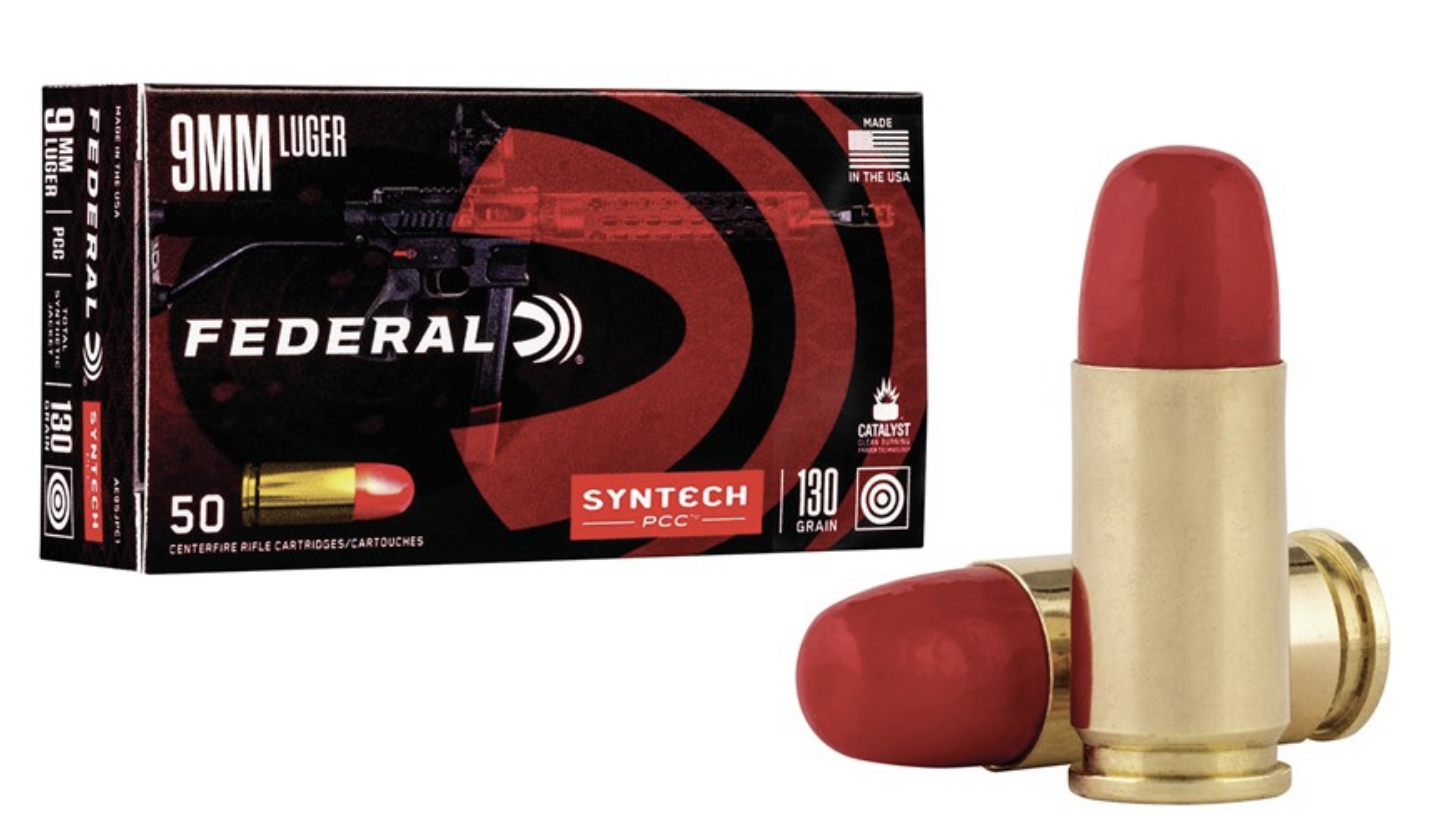
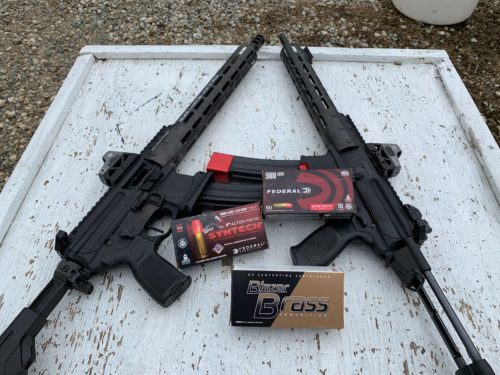
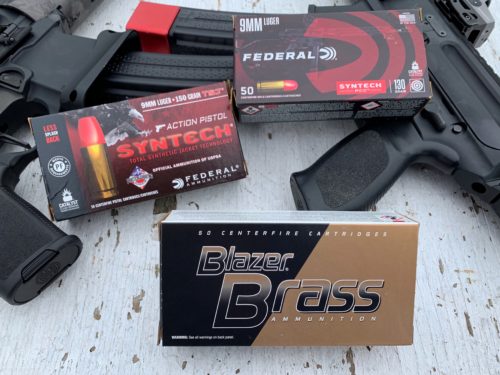
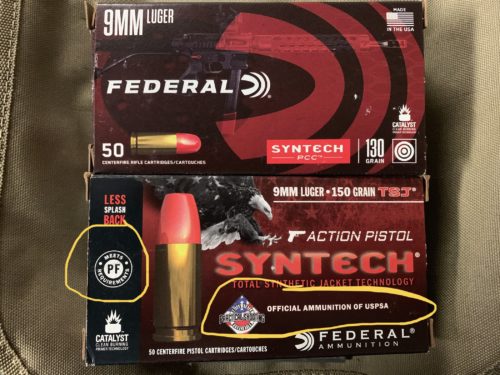
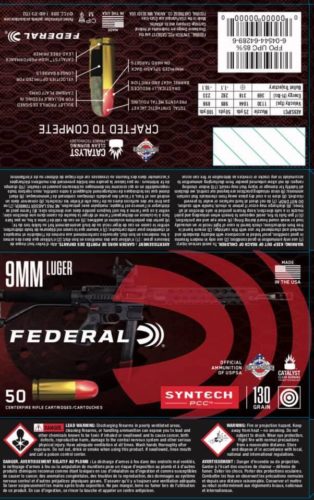
0 Comments